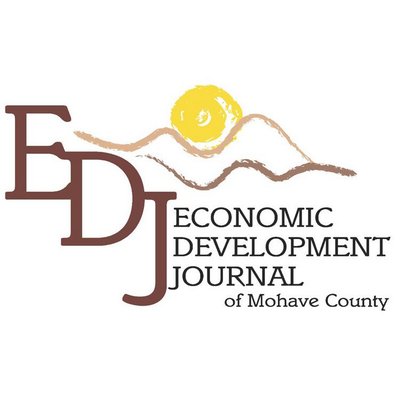ARIZONA — Super Bowl LVII, hosted in Arizona’s Valley region in February 2023, has ignited a fervent debate among economists, state officials, and local authorities regarding its economic impact. The high-profile event, celebrated for its grandeur and entertainment value, now finds itself at the center of a contentious discussion over the accuracy of its purported financial benefits to the state.
David Rousseau, the chairman of the Arizona Super Bowl Host Committee, announced on Oct. 4, 2023, that the Super Bowl had generated a staggering $1.3 billion in total economic output for Arizona, contributing $726.1 million to the state’s Gross Domestic Product (GDP). These figures, derived from an analysis conducted by the Seidman Research Institute at Arizona State University’s W.P. Carey School of Business, were touted as the highest economic impact of any event in Arizona’s history. The numbers also reportedly surpassed the economic impacts of any previous Super Bowl for which statistics are publicly available.
However, this rosy picture painted by the host committee has been met with skepticism from several economists. J.C. Bradbury, a professor of Economics at Kennesaw State University, and Victor Matheson, an economics professor at College of the Holy Cross specializing in the economic impacts of sports, have challenged the validity of these claims. Bradbury and Matheson argue that the true economic impact of mega-events like the Super Bowl is considerably smaller than often advertised. “The general result is that the economic impact of these events is actually quite small – far less than numbers that are claimed,” Bradbury told Cronkite News.
Dr. Anthony Evans, a staff director and senior researcher at the Seidman Institute who assisted with the Super Bowl impact report, acknowledged some of the limitations of their analysis. While the headline figure of $1.3 billion measures total gross output, Evans admitted it is an upward biased estimate. The U.S. Bureau of Economic Analysis, he noted, recognizes this metric as potentially overstating the effect of an economic activity on local area income. Despite this, Evans emphasized that the more critical figure was the claimed $726.1 million contribution to Arizona’s GDP.
The debate revolves around several key criticisms of the methodology used in these economic impact studies. One major point of contention is the “substitution effect” – the phenomenon where spending that would have occurred in the Valley irrespective of the Super Bowl is counted towards the event’s economic activity. For instance, if a Scottsdale hotel reaches 90% capacity during Super Bowl week, this model considers every guest as part of the Super Bowl-generated activity, ignoring the hotel’s usual occupancy rates. This approach, according to Bradbury, can significantly inflate the perceived economic benefits of the event.
Continuing the critique, the concept of “crowding out” plays a crucial role in the analysis of the Super Bowl’s economic impact. This phenomenon suggests that the influx of visitors and activities specifically for the Super Bowl may actually deter other potential economic activities. Non-Super Bowl tourists or local spending that might have occurred in the absence of the event could be displaced, leading to an overestimation of the event’s true economic benefit. Such displacement, experts argue, must be factored into any rigorous economic impact assessment.
Another critical aspect highlighted by economists is the issue of “leakages.” This refers to the phenomenon where money spent in the local economy does not entirely stay local. A prime example is the hotel industry. During the Super Bowl, while hotel prices may surge, much of the revenue generated from these accommodations doesn’t circulate within the local economy. Instead, it flows to the parent companies or external entities that own and operate these hotel chains. Victor Matheson pointed out that such leakages significantly reduce the actual economic benefits that remain within the Phoenix area.
Despite these criticisms, Dr. Anthony Evans from the Seidman Institute maintained a positive outlook on the Super Bowl’s economic impact. He argued that, even considering these factors, the event still injected approximately $650 million into the local economy, after a possible reduction of the initial estimate by about 10%. Evans emphasized that this figure represents a substantial infusion of new dollars, discounting the costs that other cities might incur for building new stadiums or other infrastructure in anticipation of hosting the Super Bowl.
The contention over the Super Bowl’s economic impact extends to its effect on Glendale, the host city. Glendale’s financial experience with the Super Bowl has been complex and somewhat contradictory to the broader claims of statewide economic benefit. While the Seidman Institute’s report suggests a significant injection into Arizona’s GDP, the direct financial advantages to Glendale remain ambiguous. Past statements from Glendale Mayor Jerry Weiers have indicated that the city incurred losses while hosting previous Super Bowls in 2008 and 2015, challenging the notion that the event is universally beneficial at the local level.
The story of Super Bowl LVII’s economic impact is not just about numbers but also about the methodology and the interpretation of these figures. It raises fundamental questions about how mega-events like the Super Bowl are analyzed economically and how their purported benefits are communicated to the public. The divergence in opinions among experts reflects a broader debate in the field of sports economics about the tangible benefits of hosting large-scale sporting events and the best practices for evaluating their true economic footprint.
The debate over Super Bowl LVII’s economic impact also underscores the importance of transparency in such large-scale economic analyses. Critics like J.C. Bradbury have expressed concern over the lack of detailed methodology and rigorous backing in the Seidman Institute’s report. The call for transparency extends beyond the academic sphere, impacting public perception and trust in such studies. As Bradbury pointedly noted, releasing a report with such significant claims without a clear explanation of its methodology undermines its reliability and equates it to guesswork rather than a scientific assessment.
In response to these criticisms, Dr. Anthony Evans defended the report’s methodology, albeit acknowledging some of the limitations pointed out by other economists. However, he also noted that there are elements of the report he could not discuss in-depth due to NFL policy, which further complicates the public’s ability to fully scrutinize and understand the report’s conclusions. This lack of full disclosure has fueled skepticism about the report’s findings and has led to calls for greater openness in how such economic impact studies are conducted and presented.
Beyond the immediate economic metrics, there are also arguments about the intangible benefits of hosting the Super Bowl. Proponents of the event, like Evans, suggest that it brings non-monetary advantages, such as attracting industry leaders, enhancing the state’s image as a desirable tourism and business destination, and potentially spurring future investments. These benefits, although harder to quantify, are considered significant factors in the overall assessment of the Super Bowl’s impact.
The controversy surrounding the economic impact of Super Bowl LVII extends to state-level governance and fiscal management. The Arizona Auditor General’s report, which revealed over $2.4 million in state expenditures, including lavish gifts and free Super Bowl tickets for members of the Governor’s staff, has been subject to investigation. This scrutiny reflects the broader concerns about how public funds are used in conjunction with major events like the Super Bowl and the need for accountability in such spending.
The economic impact of Super Bowl LVII remains a topic of complex and multifaceted debate. While the event undoubtedly brought excitement and attention to Arizona, the extent and nature of its economic benefits are contested. This discussion not only highlights the challenges in accurately assessing the impact of mega-events but also underscores the need for transparency, rigorous methodology, and consideration of both tangible and intangible factors in such analyses. As the debate continues, it serves as a critical case study in understanding the economic dynamics of hosting large-scale sporting events and their broader implications for host cities and states
— Jeremy Webb.
Two Hospitals United for our Tri-State Neighbors
As the leaders of Valley View Medical Center and Havasu Regional Medical Center, we were thrilled that our dedicated and hardworking staff gathered together in early December as part of a Market Leadership Development Conference. Our leadership and staff shared ways...





























